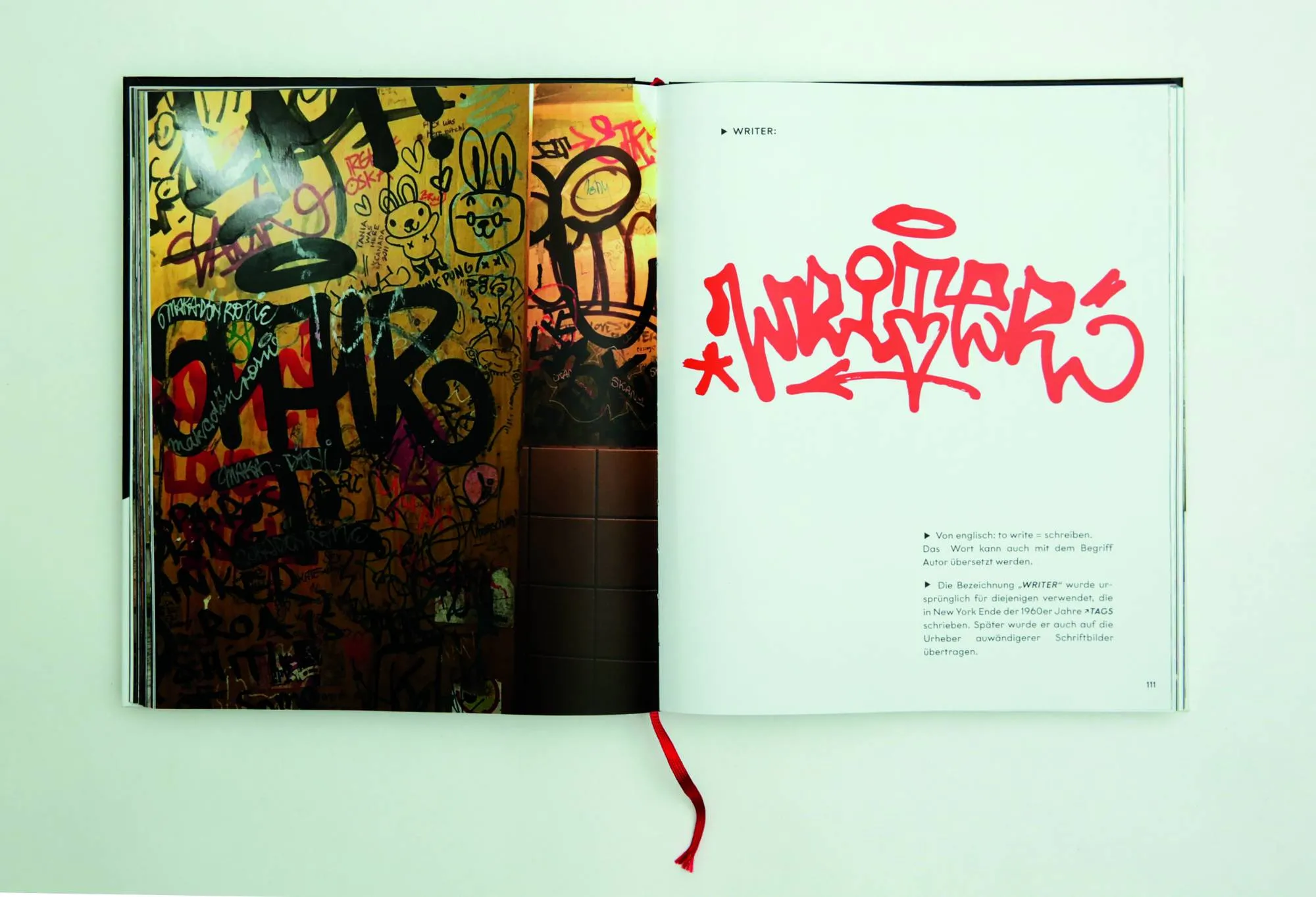WRITE!
Principles and elements of urban handwriting

Nowadays, graffiti can be found in big cities all over the world. While the colourful, partly technically sophisticated works now enjoy a certain acceptance in society, the tags, which represent the original form of graffiti writing, are still regarded as mere daubing and vandalism.
The various writers, as they call themselves, have meanwhile developed very versatile formal languages and their very own writing systems. But there are basic elements and writing concepts that are used all over the world and have not changed since the emergence of the tags. In the search for a new way of writing, the trend today is to mix traditional calligraphic ways of working with the unorthodox techniques and styles of graffiti writing. But what is a 'tag' and what is the meaning of these sometimes cryptic words of art? What are these elements on which a 'tag' is built and according to which principles does it work?
"WRITE! — Prinzipien und Elemente Urbaner Handschrift" on the one hand provides an insight into the history of graffiti writing and introduces basic concepts and approaches to the development of a tag, as well as some typical tools. On the other hand, the motivations of the writers, social positions and similarities between classical schools of calligraphy and graffiti writing are also discussed. Using photos from the last five years, the work shows the most diverse places that have been conquered by tags and thus makes the complexity of urban handwriting clear, using Berlin as an example.
Master's thesis by David Lehmann
Project support
Project management

Project management
